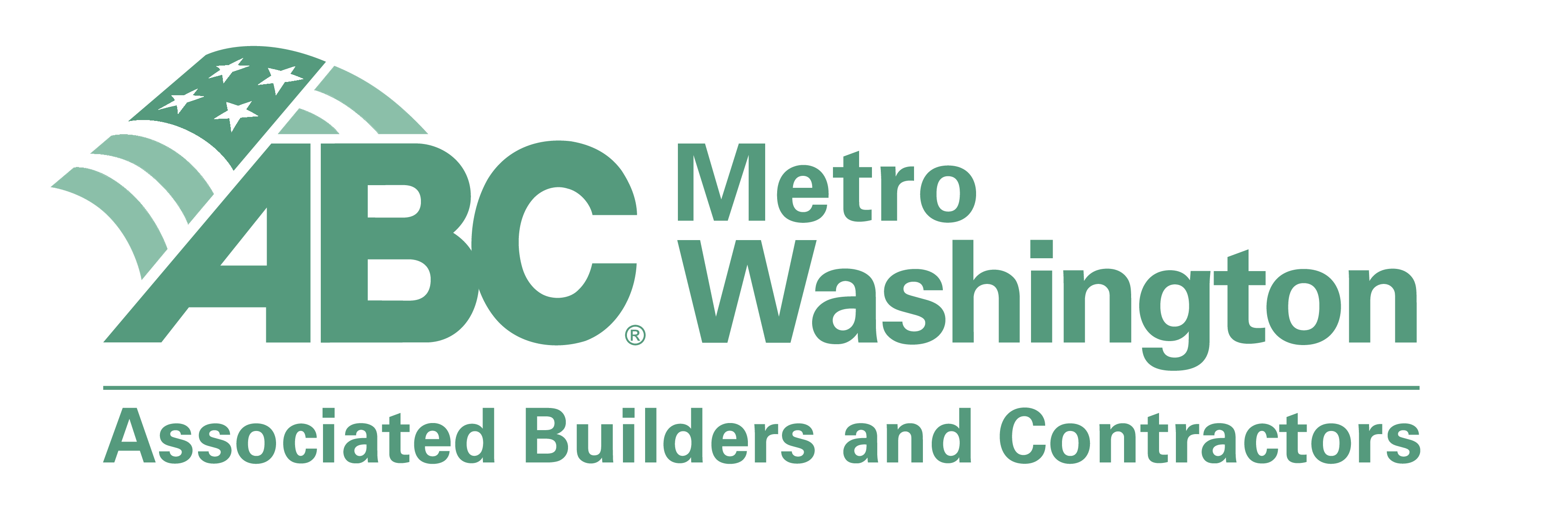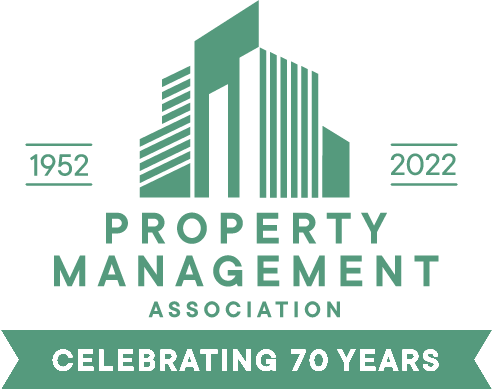Tree Removal and Commercial Property Value
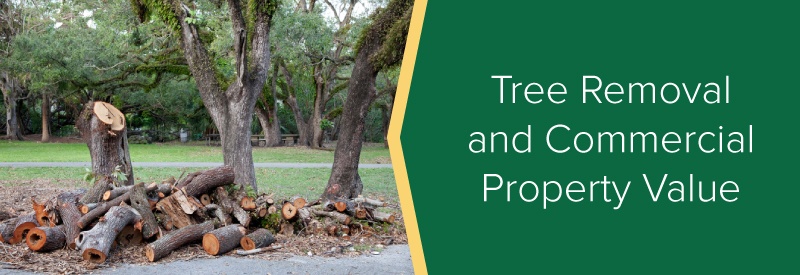
An old, sprawling tree is a beautiful thing.
Besides adding shade, mature trees do a world of good for properties. They absorb pollutants in the air and water and reduce soil erosion. They significantly increase curb appeal — a mature tree can be valued between $1,000 and $10,000 and can increase property value.
While a thriving tree may add to your property value, an unhealthy one can quickly send it plummeting. No one wants to take down an old tree. But sometimes it’s in the best interest of your company and property to have a tree professionally cleared. Whether your tree is dying, damaged, or in the way of expansion, removal may be in the best interest of your business.
Keep reading to learn why tree removal is often necessary, and why consulting with a professional service is the best choice for safe, efficient maintenance.
What Are Tree Removal Services?
A commercial tree removal service provides professional arborcare and tree elimination. While specific benefits vary between companies, basic features include roping and chopping the tree, cutting the tree into smaller pieces and moving the tree off of your property. Another common service is stump grinding, which requires specialized equipment.
Because tree removal is often hazardous, it requires significant skill and experience to be done well. Besides tree clearing, many tree removal businesses have arborists on staff who can evaluate and diagnose declining trees.
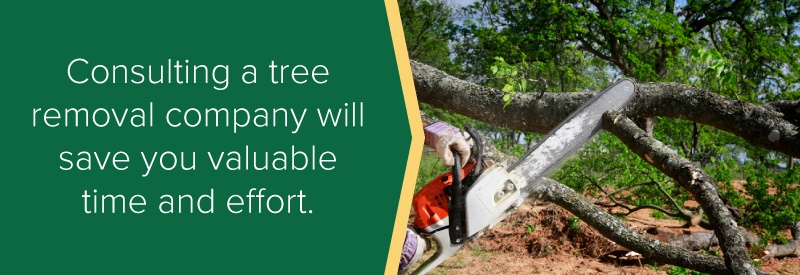
Why Hire a Professional?
It can be tempting to attempt tree removal yourself. But more often than not, this will cost you more in the long run. Below are three significant benefits of hiring a professional service as opposed to taking down a tree yourself:
1. Saves Time
Ultimately, consulting a tree removal company will save you valuable time and effort. A professional service includes expert employees trained in the proper tree removal equipment and techniques. Do-it-yourself tree removals often use non-optimal tools, which make the process more difficult and time-consuming than necessary.
A tree removal service will also restore your property after the clearing, which minimizes time-consuming work like cleaning up debris and grinding down stumps.
2. Saves Money
Professional companies give you the best value for your investment. If you try to remove a tree yourself, it is likely you’ll make errors along the way. The cost of mistakes quickly adds up and, along with the potential for damage and accidents, can lead to future repair costs.
A good removal company has been taking down trees for years and has gained valuable strategies and proficiency through experience. Professionals will also understand the different types of pests and diseases that affect trees in your area. They know what they’re doing, which makes them both time and cost efficient.
3. Lowers Risk
When dealing with any kind of heavy equipment, things can go wrong in a moment. Hiring professionals will ultimately protect your property, and your employees, from hazards and accidents.
A common example is trees that are too close to power lines. In this scenario, it’s especially important to hire professionals. When dealing with power lines, there is always a risk of accidentally touching a wire or for a grounding arc of current to hit you, your pruning tool or your ladder. Expert tree services are aware of the dangers and are prepared to handle emergency situations, reducing the risk of injury.
Hiring a service is the responsible way to manage your property and only helps your business in the long run.

Why Have a Tree Removed?
There are many reasons why you should consider removing a tree from your property, beyond the low curb-appeal of scraggly, withered trees. Below are some of the most common scenarios:
1. Increase Safety
The most obvious reason to remove a tree is safety. Old, damaged trees pose a risk of collapsing or dropping limbs. Unhealthy trees are more susceptible to harm from weather conditions, and the resulting debris can cause injuries.
Trees have vast root systems, and these can attach to foundations. Over time, the gradual root growth will weaken structural supports and make your property unstable. Wandering roots can also wreck pavement and walkways, creating tripping hazards.
2. Property Protection
Dead and damaged trees also pose a risk to your property. Cracking limbs can devastate roofs, air conditioning units and vehicles. Overgrown roots can compromise structural integrity, and damage electric, gas and sewer lines. Roots are especially damaging to concrete structures, which are no match for the strength of determined trees.
Sometimes, root systems can block water from running away from a building or lawn, which leads to destructive water retention. In situations like this, it’s almost impossible to solve the problem without eliminating the tree.
Dead trees are valuable wildlife habitat, but not necessarily the type you want around your business. Insects and pests may take up residence on your property, and they carry their own list of potential damages.
3. Construction Constraints
Even healthy trees need to be taken down if they interfere with important construction or block visibility along lanes of traffic. But even if you work around a tree, the surrounding construction will cause it deep stress. While it may not immediately harm the tree, many will die in a few years. Regardless of outward damage, if 50% of the root system is damaged, the tree should be immediately cleared.
Powerline crowding is a common construction-related problem. If under a powerline system, a tree should mature at less than 25’ tall. Many trees grow beyond this, however, and need to be either regularly trimmed or removed. If allowed to grow into power lines, a tree poses a huge risk during rainy weather. If a power line is damaged, electricity can arc as much as 10’ to tree foliage and ground out. This leads to power failures and property damage.
4. Property Value
While big trees may add value to your property, removing unhealthy ones will increase the aesthetic appeal of your land. Beyond being an eyesore, dead trees can pose a danger to other nearby plants and spread disease and damage across your property.
Even if your trees are healthy, you may consider removing them if they get in the way of an otherwise lovely view. Selectively clearing some trees could frame and highlight the natural beauty of your property, increasing its commercial value.
Healthy trees can also shed heavily in autumn, which creates a time-consuming mess over your lawns, pavements and walkways. Clearing out haphazardly-placed trees provides space for other structures and landscaping, and will make your property look intentionally, thoughtfully designed.

When to Be Concerned About Your Tree
High winds, storms, insects and diseases can all destroy a good tree. A good rule of thumb is that if 50 percent of your tree is damaged, it should probably be eliminated. A damaged tree can linger on for several years, but it will grow more dangerous and more unattractive the longer you leave it.
But there are subtler signs that a tree needs to go. Below, we’ve listed nine indications that it might be time to remove your tree:
1. Trunk Damage
If the trunk of your tree has vertical cracks or seams, it could be a sign of internal decay. Sudden and severe trunk damage could also doom your tree. If the damaged area measures less than 25 percent of the total trunk circumference, the wound will probably heal over time. But if it’s any bigger, you should consult with a certified arborist — it might be best to go ahead and remove the tree before the wound grows worse.
2. Mushroom Growth
Not all mushrooms are a bad sign. However, if you notice mushrooms or other fungi sprouting around the base of the tree, it could be a sign of root rot. If mushrooms start growing on the tree, it probably indicates internal rot. This will gradually destabilize the tree and, potentially, lead to greater damage of your property.
3. Dead Branches
Large, mature trees with broken tops or heavy, damaged limbs pose a danger to people and property. If less than 25 percent of the limbs are damaged in a storm or from construction, the tree will most likely recover. Even if only a few branches are damaged, if they are all on one side of the tree, it could lead to an uneven appearance and instability. It could also be symptomatic of root or trunk damage on the affected side, which should be evaluated by an arborist.
If limbs begin to gradually die, this often points to a deeper problem, like pests or disease. Look for thin twigs without living buds at the end of branches — these can be early indicators of limb decay. Have your tree examined if large branches begin to die — some cases can be treated, but many are terminal.
4. Severe Leaning
If a tree has always grown at a slight lean, it shouldn’t be a problem. But a sudden slant in your tree probably indicates root breakage or weakening. In many cases, the tree should be removed before it causes severe damage — it is difficult for a tree to correct itself back to a vertical position. A tree leaning more than 15 percent from vertical should be taken down immediately.
5. Hollow Trunk
Your tree might develop holes in its trunk. If you inspect them, you could make a surprising discovery — your tree is hollow!
The essential, life-supporting tissue of a tree — the xylem and phloem — are on the outer edges of its trunk. This means that a tree can live for years with an empty center. However, a tree’s core exists to support the tree and give it structure. If a tree is hollow, its trunk strength is compromised, making it a danger to people and your property. If one-third of a tree’s trunk is hollow, it should be removed before it falls in a storm and causes serious damage.
6. New Sprouts
While a healthy tree has some new growth each season, be aware of sprouts springing up at the base of the tree, or of epicormic shoots — small branches that come from the trunk itself. These types of new growth are often responses to severe stress and indicate that something is very wrong with your tree.
Typical stresses include soil compaction, injuries from new construction or over-exposure to sun after thinning an area. While not all stresses will be fatal, a sudden increase of sunlight will be too much for most trees. Young trees might be able to adapt, but old, mature trees will most likely slowly decline.
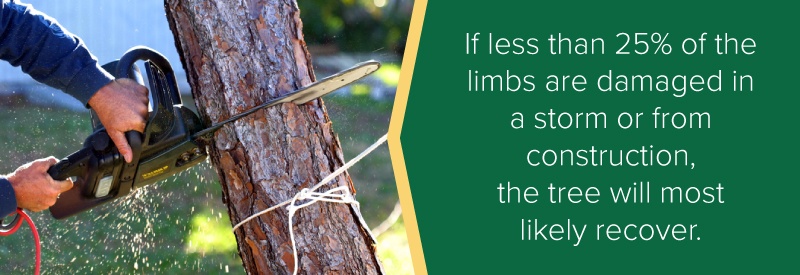
7. Precarious Environment
Some properties have trees growing in precarious places, such as rock ledges or near bodies of water. These trees will often have shallow root systems and are inherently unstable. If they are close to structures or could damage important systems like vulnerable waterways, the trees should most likely be removed.
8. Undesirable Species
Sometimes a tree should be removed for the benefit of the rest of the property. Undesirable trees should be taken down whenever possible. Characteristics of undesirable species include weak wood that is prone to breakage, shallow roots that disrupt grass and pavement, large production of debris, trees highly susceptible to pest or disease infestations, or invasive species that outcompete native trees.
Undesirable species include Bradford pear, box elder, Siberian elm, black locust, mulberry, mimosa, Norway maple, empress tree, poplars and willows. While they may be pretty, undesirable trees can harm your property in the long run. Bradford pears, for instance, are notoriously brittle and snap in high winds. In the first bad storm of the season, you might lose all of your beautiful pear trees — and they might fall on your employees’ cars. Try replacing with a more stable native species, such as dogwood.
9. Damaged History
Bad pruning or maintenance techniques can have repercussions years later. An example is the outdated practice of “topping” trees, which is the technique of chopping off the upper portion of a tree to reduce height. A tree is deeply stressed by topping, and the practice can lead to future decay, sunburn and weak branches.
It’s important to turn to professionals when caring for your trees. Not only can a certified tree service diagnose problems with your trees, but they are also trained to properly maintain or remove them without causing unnecessary damage.
Consult With an Expert Today
Not sure if you should remove trees from your property? Consult our full-service landscaping team for a free, professional opinion.
If you have commercial property in Maryland, Washington D.C. or Northern Virginia, Complete Landscaping Services can help you decide what’s best for your trees and your property. We have all the resources and experience of a national company, but we focus on helping the community around us.
At Complete Landscaping Services, we guarantee a Green Peace of Mind — we deliver the highest quality of workmanship with the best possible value, and we won’t rest until you’re satisfied with our work. We provide commercial landscape maintenance along with arborcare and tree removal, and we love what we do.
Contact us to consult with an expert and get a free quote for your property!


